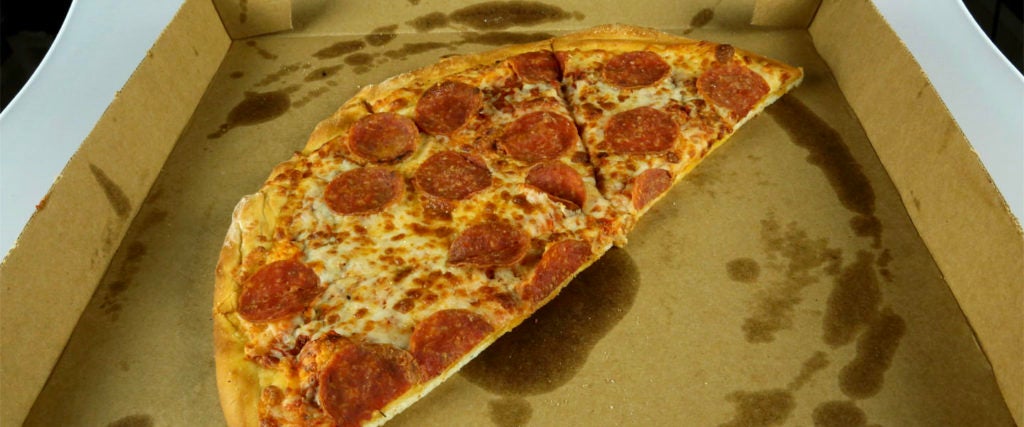It’s been a magical day. You picked up a pizza, smoked some weed and ate yourself into an afternoon coma. Just now, you woke up ready for another feast. But as you stand over your leftover slices, you wonder whether they’re still good. It’s been a few hours since you passed out, leaving them to deteriorate on the counter. How long can pizza sit out, anyway?
While there are plenty of people, including myself, who’d gladly gobble a slice that’s seen a few sunsets, food safety professionals put a much stricter timeline on pizza’s lifespan. According to World Pizza Cup champion Tony Gemignani, the health department says food that’s been out at room temperature for more than four hours should be thrown out, since it could be contaminated by bacteria, which can give you a gnarly case of food poisoning. That’s because germs on food double in number every 20 minutes between temperatures of 40 and 140 degrees Fahrenheit.
Meanwhile, pizza that’s been out for between two and four hours is still safe to eat, but shouldn’t be stored in the refrigerator, because by that time, it’s likely already amassed a few germs that will continue to grow and spread. In fact, only pizza that’s been exposed to room temperature for under two hours deserves a spot in your fridge (where it will stay good, or at least safe to eat, for up to four days).
Not to mention, pizza begins to go through some arguably unpleasant structural changes pretty quickly. “The cheese tends to firm up at about the same pace that the crust seems to lose its crispness,” says Brad Kent, co-founder and chief culinary officer of Blaze Pizza.
Nonetheless, Gemignani acknowledges that eating pizza past its prime is “pretty common,” and other food safety experts have previously said that swallowing an old slice isn’t the riskiest of pursuits. That’s because the ingredients in pizza — bread, baked cheese, roasted vegetables — are generally low in water, which makes a barren environment for bacterial growth. Tomato sauce, meanwhile, is typically acidic enough to keep germs at bay (for a while, anyway). And pepperoni is cured, meaning it was made to last.
That’s why while Gemignani says pizza is best straight out of the oven, he also supports its role as an awesome leftover. “The cheese almost consumes the ingredients and keeps them fresh and moist,” he explains. That’s why cold pizza can be a delicacy in its own right.
If you want to keep your just-delivered pizza fresher for longer, however, here’s a tip that doesn’t involve chucking it into the fridge: “Open all the vents in a pizza box so pizzas don’t steam,” says Kent. This helps stop the crust from losing its crispiness.
For more perspective on the relative safety of your hours-old slice, a 2015 report on foodborne illnesses linked to pizza cited a few hundred cases of food poisoning over more than a decade of worldwide consumption. Meanwhile, in the U.S. alone, we slam more than three billion pies per year, many of which were probably situated on a counter for some time.
In other words, there’s no guarantee that your old pizza is safe to eat, but the odds are in your favor. Though, you were gonna eat it either way, weren’t you?

